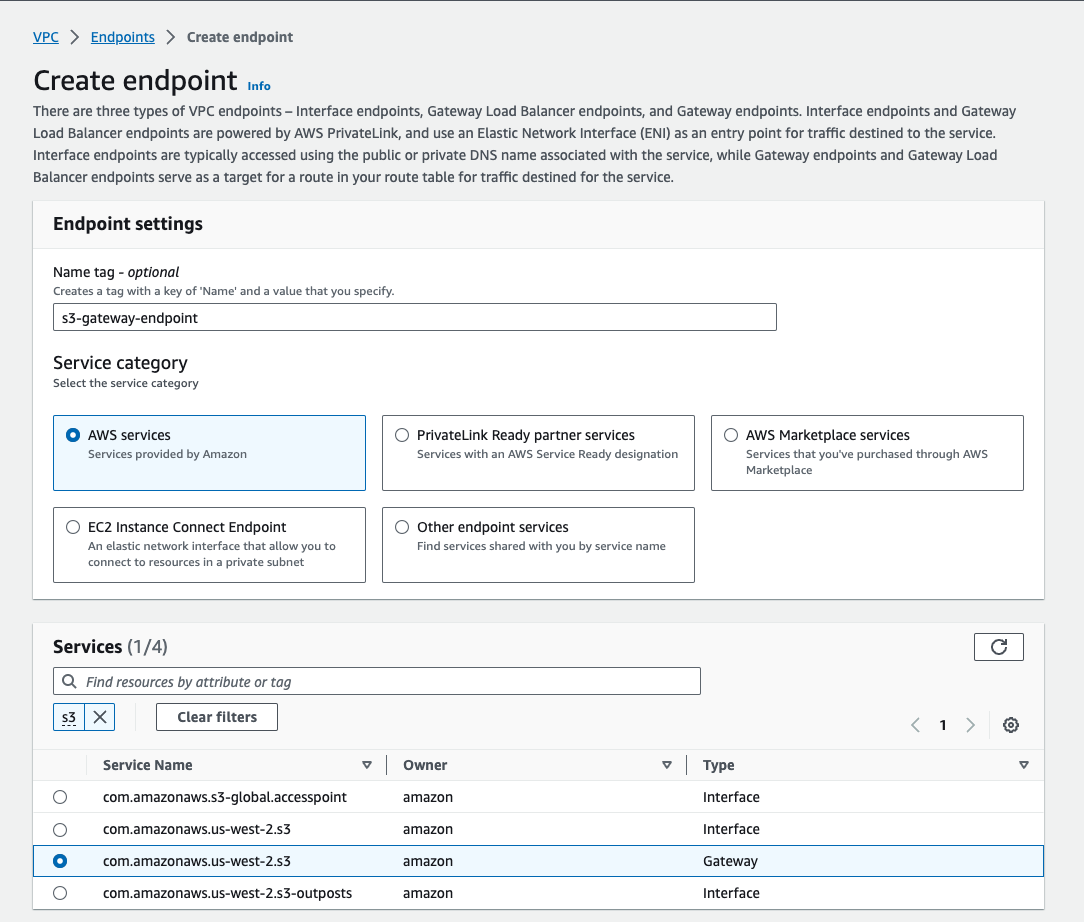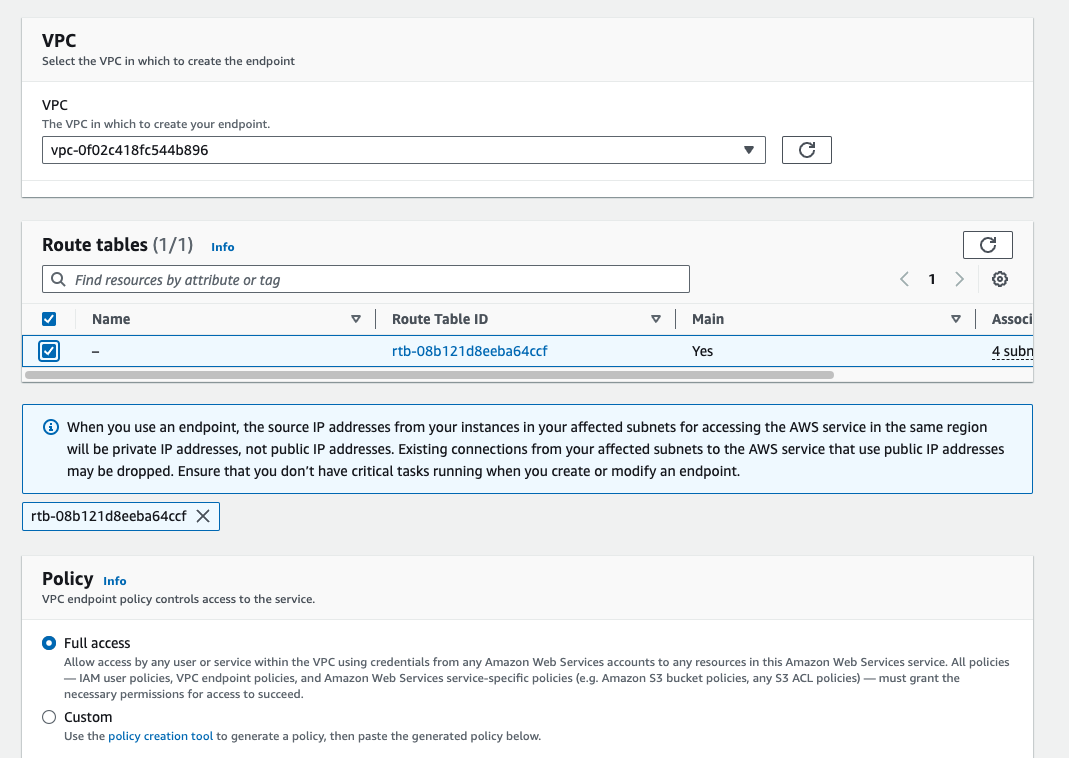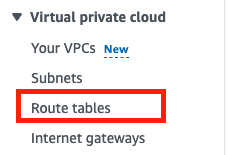What is AWS Gateway Endpoint?
Introduction
AWS Gateway Endpoint is a service provided by Amazon Web Services (AWS) that allows for secure and private communication between resources within a Virtual Private Cloud (VPC) and AWS services such as Amazon Simple Storage Service (S3) and Amazon DynamoDB. It provides a direct and optimized connection within the AWS network, eliminating the need for internet traffic to access AWS services. By leveraging AWS Gateway Endpoint, users can ensure a higher level of security and reduced operational overhead while accessing AWS services from their VPC.
This article will delve into the features and benefits of AWS Gateway Endpoint, as well as highlight its use cases and how it differs from other related services like Internet Gateway and API Gateway.
Benefits of Using AWS Gateway Endpoints
AWS Gateway Endpoints provide a reliable and secure connection to AWS services such as Amazon S3 and DynamoDB without the need for an internet gateway or NAT gateway.
- Enhanced security: One of the main benefits of using Gateway Endpoints is the enhanced security it provides. By leveraging private connectivity within the Amazon Virtual Private Cloud (VPC), Gateway Endpoints ensure that sensitive data does not traverse the internet. This eliminates the risks associated with transmitting data over public networks and provides a more secure environment for accessing AWS services.
- Simplified architecture: Gateway Endpoints also simplify access to AWS services. They eliminate the need for complex networking configurations by providing direct access to services such as Amazon S3 and DynamoDB from within the VPC. This simplifies the setup process and reduces operational overhead.
- Reduced Data Transfer Costs: Another advantage of using Gateway Endpoints is the cost savings it offers. By bypassing the need for an internet gateway or NAT gateway, organizations can reduce their infrastructure costs. This is especially beneficial for workloads that require frequent and high-volume access to services like Amazon S3, as it eliminates the need for data transfer costs over the internet.
Compared to other types of VPC endpoints, such as interface endpoints, Gateway Endpoints offer distinct advantages. They provide a private connection to specific AWS services, whereas interface endpoints provide access to services through an Elastic Network Interface (ENI). This makes Gateway Endpoints a more efficient and cost-effective choice for accessing AWS services within a VPC.
In summary, AWS Gateway Endpoints offer a reliable and secure connection to AWS services, simplify access, reduce costs, and provide advantages over other types of VPC endpoints. They are an essential tool for organizations looking to streamline their access to services like Amazon S3 and DynamoDB within a secure and private environment.
How to create a Gateway Endpoint?

To create a Gateway Endpoint for accessing an S3 bucket, follow these steps:
-
Open the AWS Management Console and navigate to the Amazon VPC service.
-
In the left navigation pane, click on “Endpoints” and then click on “Create Endpoint.”

-
Select S3 as the service you want to access and choose the appropriate VPC and route table.


-
Click on “Create Endpoint” to create the Gateway Endpoint.
-
Verify the Route Table and confirm that the Gateway Endpoint is created successfully.


-
Test the Gateway Endpoint by accessing the S3 bucket from resources within your VPC. The traffic will now flow privately through the Gateway Endpoint without the need to traverse the internet.
By following these steps, you can create a Gateway Endpoint to securely access an S3 bucket from within your VPC. Remember to adjust the instructions if you are creating a Gateway Endpoint for a different AWS service.
Limitations
While AWS Gateway Endpoint offers several benefits, it also has certain limitations to consider:
- Limited service support: AWS Gateway Endpoint supports a specific set of AWS services, such as Amazon S3 and DynamoDB. It is important to check the documentation to ensure that the services you intend to use are compatible with Gateway Endpoints.
- Regional availability: Gateway Endpoints are currently available only within specific AWS regions. Before implementing Gateway Endpoints, it is crucial to verify if your desired region supports this service.
- One-to-one service association: Each Gateway Endpoint is associated with a single AWS service. This means that you need to create separate Gateway Endpoints for each service you want to access within your VPC.
- Inability to access services hosted outside AWS: Gateway Endpoints cannot be used to access services hosted outside of the AWS platform. If you have resources or services located outside of AWS that need to communicate with your VPC, you may need to consider alternative networking solutions.
- Limited interface endpoint capabilities: Unlike interface endpoints, Gateway Endpoints do not provide access to services through an Elastic Network Interface (ENI). This means that certain features, such as attaching security groups directly to the endpoint, are not available with Gateway Endpoints.
It is important to thoroughly evaluate these limitations to ensure that AWS Gateway Endpoint is the appropriate solution for your specific use case. While the service offers many advantages, understanding its limitations will enable you to make informed decisions during the implementation process.
Use-cases
AWS Gateway Endpoint offers a range of use-cases, providing organizations with enhanced security, reduced costs, and streamlined access to AWS services within their VPC. Some common use-cases include:
- Private Access to Amazon S3: AWS Gateway Endpoint enables organizations to securely access Amazon S3 buckets from within their VPC without the need for an internet gateway or NAT gateway. This ensures that sensitive data remains within the private network, enhancing security and compliance. Organizations can use Gateway Endpoints to build data pipelines, backup data securely, and accelerate data transfer between their VPC and Amazon S3.
- Private Access to Amazon DynamoDB: With AWS Gateway Endpoint, organizations can establish a private connection to Amazon DynamoDB from their VPC. This allows for fast and secure access to DynamoDB tables, enabling real-time analytics, data processing, and application development within the VPC. Gateway Endpoints simplify the integration of DynamoDB into applications running within the VPC, improving performance and reducing latency.
- Serverless Application Development: AWS Gateway Endpoint is an essential tool for serverless application development within a VPC. By establishing private connectivity to services like Amazon S3 and DynamoDB, developers can build serverless applications that securely access data and resources within the VPC. This enables organizations to take advantage of functions-as-a-service platforms like AWS Lambda while maintaining a high level of security and compliance.
- Data Processing and Analytics: Gateway Endpoints can be used to streamline data processing and analytics workflows within a VPC. By securely accessing services like Amazon S3, organizations can efficiently process large datasets, perform analytics, and generate insights without incurring data transfer costs over the internet. This is particularly useful for big data and machine learning workloads that require frequent access to data stored in Amazon S3.
- Shared Services within a VPC: Organizations using VPCs to isolate workloads can benefit from using Gateway Endpoints to securely access shared services within the same VPC. For example, multiple application subnets within a VPC can leverage a Gateway Endpoint to access a central database hosted in a different subnet. This approach simplifies network configuration, enhances security, and reduces the operational overhead of managing separate networking components.
Conclusion
In conclusion, AWS Gateway Endpoint provides a secure and efficient way to establish communication between your VPC and AWS services. By leveraging this technology, you can enhance security, reduce costs, and improve the performance of your applications within the AWS ecosystem. As an experienced technical audience, understanding the capabilities of this technology will empower you to make informed decisions while architecting your AWS infrastructure.